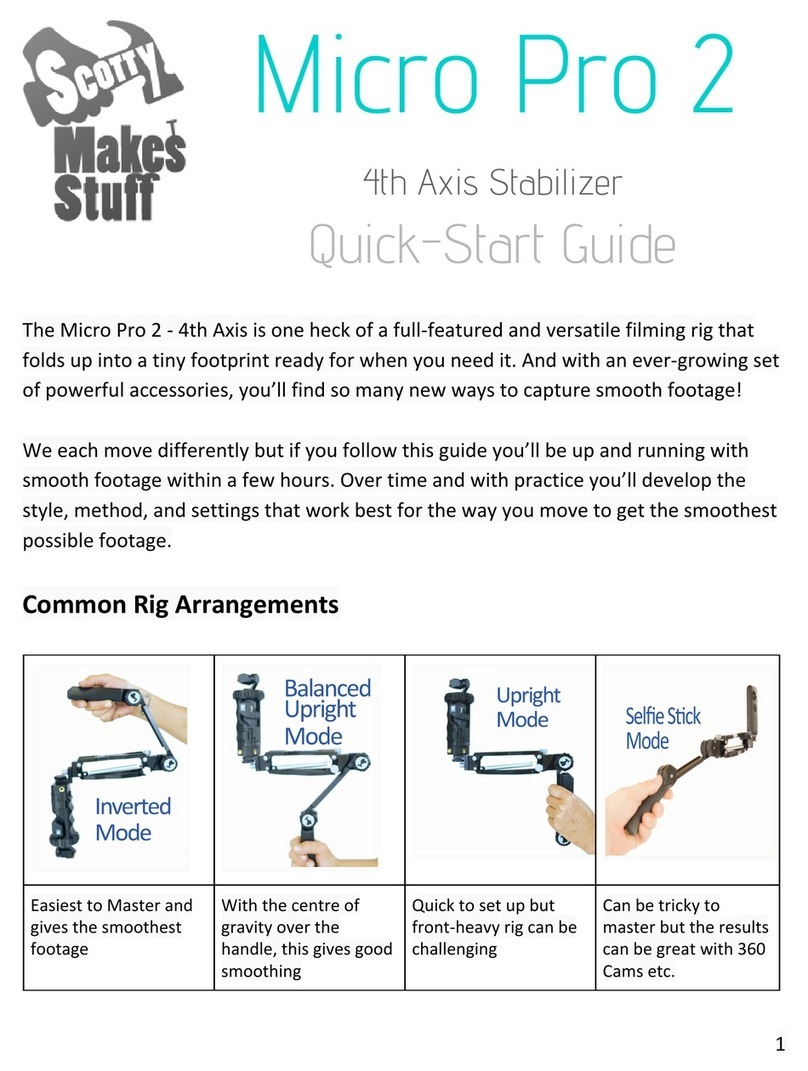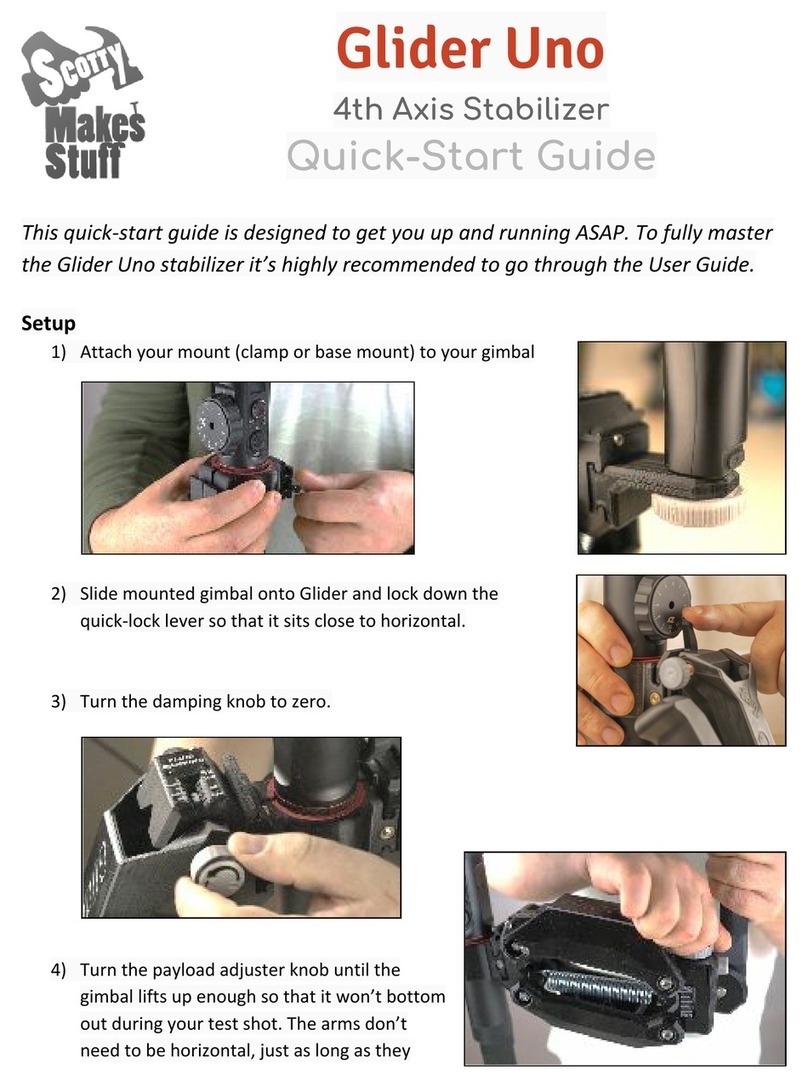Although your stabilizer is ‘tough as old boots’ extremely high temperatures can
cause permanent damage so please remember:-
Note:
Just as you wouldn’t leave your expensive cameras in a car on
an extremely hot day, don’t do likewise with your Glider Pro 3 Duo.
Temperatures exceeding 80°C (180°F) can cause permanent
deformation!
Attaching the gimbal mount to your gimbal
Before you add the stabilizer to your gimbal you need to first add the gimbal
mount (
Note
: This is for standard mounts. Some specialized mounts may connect
differently)
. This mount is essentially a clamp that holds your stabilizer in place on
your gimbal. In most cases the mount should attach high on the handle but
occasionally you may wish to change the position to lower down the handle for
even higher shots or when inverted for even lower shooting positions.
1. Take your mount halves, the bolts that
come with the mount and the M4
allen key (the middle size allen key)
2. Place both sides of the mount clamp
around the handle and line them up
so that the top sides sit level with
each other.
3. While holding the clamp in position with one hand use your free hand to
start to screw the bolts in by hand.
4. Then continue using the M4 allen key tightening each side alternately just a
turn or two until the clamp holds firmly
and won’t be moved easily by hand.
There’s no need to tighten fully at this point. There should be a gap
between the two clamp halves.
5
User Guide - Glider Pro 3 Duo - 4th Axis Stabilizer - 20180917 ScottyMakesStuff.com





























